Commentary &Daily post 19 May 2012 06:26 am
Going to the Movies
- We’ve currently been working hard to raise a little money to finance completion of a sampler of our proposed animated feature, POE. This is the biography of Edgar Allan Poe, and it’s a project that I’ve been working closely with for the past five or more years. A lot of research, writing, drawing, planning, boarding and – the hardest and most fun part – thinking about the shape of the film has been ongoing. It’s been a lot of work, and we haven’t really started yet. This has made me think often enough about the Big Picture – the shape of things to come.
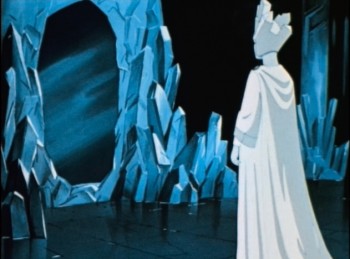 When I was a kid, I used to wait with baited breath for any Disney animated feature. Actually, I should say ANY animated feature. The theatrical release of The Snow Queen or Mr. Magoo’s Thousand & One Arabian Nights kept my juices flowing almost as much as did Lady and the Tramp or One Hundred and One Dalmatians. All of those films came off as “Special” and they stayed within my head. I tried to imitate them as a child filmmaker with my 8mm animated films, always producing 15-30 secs of my own version of these films before ultimately quitting on most of them.
When I was a kid, I used to wait with baited breath for any Disney animated feature. Actually, I should say ANY animated feature. The theatrical release of The Snow Queen or Mr. Magoo’s Thousand & One Arabian Nights kept my juices flowing almost as much as did Lady and the Tramp or One Hundred and One Dalmatians. All of those films came off as “Special” and they stayed within my head. I tried to imitate them as a child filmmaker with my 8mm animated films, always producing 15-30 secs of my own version of these films before ultimately quitting on most of them.
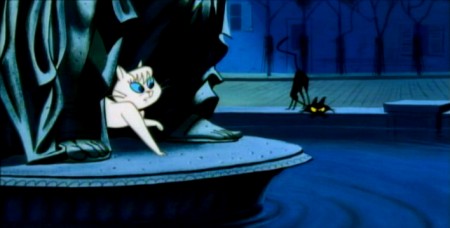
Gay Purr-ee
Then, in the ’70s, things really started to change. Animated features started to come at us fast and furious. Fritz the Cat, Secret of Nimh, Heavy Traffic, Rockadoodle, American Rabbit, The Adventures of Mark Twain, and too many others to mention. I stopped imitating the work; then I stopped going to the films. I still haven’t seen Treasure Planet. But I did see The Iron Giant, Balto and The Triplettes of Belleville, all of which might not have been made except for the glut of animation as the studios tried to cash in.
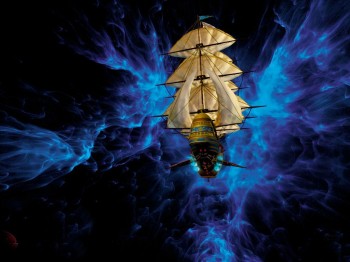 Eventually, we moved to the current era with all those cgi movies. I have to admit that I’m not sure I see anything “Special” about The Tale of Despereaux or Despicable Me. Monster House was a mess, and the same for The Lorax, Arthur’s Christmas, Cars 2, or even Up and Finding Nemo, Bolt or Chicken Little, nevermind Dinosaurs. None of these are memorably important to me. Maybe The Brave will be. At the moment, who knows. It all rolls past so quickly and with very little value.
Eventually, we moved to the current era with all those cgi movies. I have to admit that I’m not sure I see anything “Special” about The Tale of Despereaux or Despicable Me. Monster House was a mess, and the same for The Lorax, Arthur’s Christmas, Cars 2, or even Up and Finding Nemo, Bolt or Chicken Little, nevermind Dinosaurs. None of these are memorably important to me. Maybe The Brave will be. At the moment, who knows. It all rolls past so quickly and with very little value.
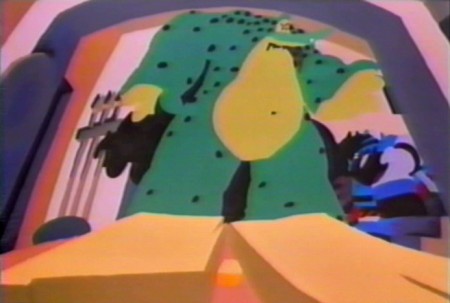
Grendel Grendel Grendel/font>
I loved Spirited Away. Persepolis came and went as black and white as it actually was. I was completely rapt with Ponyo, and the animation in Arietty was something I wanted to see again. But the film was gone before I really had the chance. Sure I can get the DVD, but it’s not the same. I want the theatrical experience. The Illusionist, a favored film, was received with such a lack of enthusiasm, despite an Oscar nomination, that I was sharply disappointed.
I could keep going, but I think you may have gotten the point. There are just a lot of films, and nothing feels special anymore. They come, go, and are forgotten.
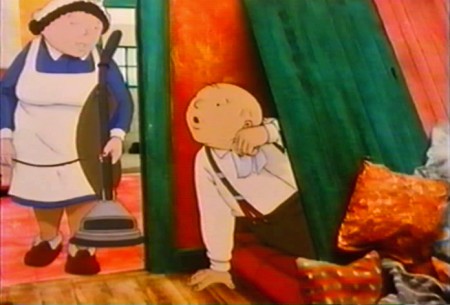
Where the Wind Blows
So now I’m about to do POE. What a lot of work, and I have to wonder how quickly it’ll be off the shelves. I haven’t even started making the movie and already I’m mourning its disappearance from theaters. Bill Plympton works his butt off to make his features, and he doesn’t even get a proper distribution. How does that feel, I wonder. I’m not sure how I’d take it.
But then, I suppose this is the lament for all movies, in the big picture. Only when a film rises above others will it be cherished. I may be in the minority, but I do cherish The Illusionist. I do remember the animation, and the filmmaking choices; the complex and delicate story. Circumstances aren’t right for it, but it does have its supporters. I can only hope for the same for a film I make and hope it sits at a theater for more than a weekend. However, I do have to wonder about the job I do and the disposability of it.
I suppose in some ways I’m reminded of theater. Those people put all their energy into a show that takes very hard work, indeed. Then they put on their show, and it’s gone. Only the few hundred in the live theater have seen it and will remember it. If it’s great, it will become legend; if it’s horrible it will become a different kind of legend. The original Follies or Carrie. If it’s mediocre, it doesn’t even become memorable.
What an odd business we’re in.
__________________________
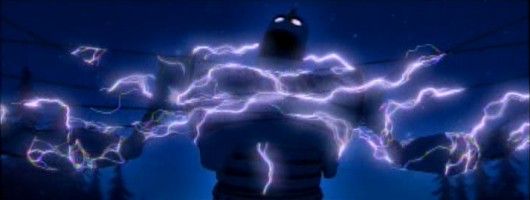
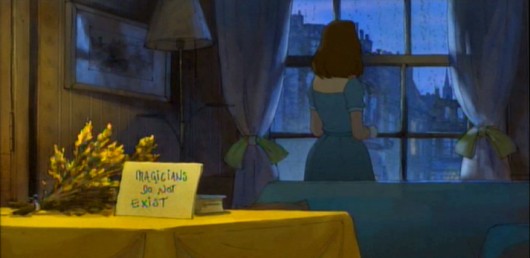
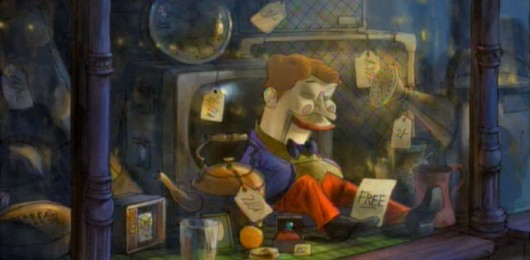

on 19 May 2012 at 9:21 am 1.Neil said …
I love the Illusionist too. A beautiful and gentle film.
I’d also add to that list of films that came and went too fast “Cats Don’t Dance”. I don’t recall it ever being in the theatre and yet the animation and story are, to me, of the highest calibre.
on 19 May 2012 at 12:08 pm 2.anik said …
Same must be true about all creative things in general: film, music, architecture… It seems like the more tools exist to aid the process, the less imaginative they come out. As if the age of discovery is gone, and now is the age of production – hopefully it’s something that goes in cycles.
on 19 May 2012 at 1:22 pm 3.Eric Noble said …
Well, at least you can take pride in remembering the good films (animated or otherwise) that have been released. Even if only a few hundred people saw it and remember it, a film will never die.
I loved The Illusionist too. I saw it a round my birthday, and it was a real treat. A pure delight from beginning to end. Sylvain Chomet is a real artist in a world of producers and assembly-line workers.
on 19 May 2012 at 1:46 pm 4.Scott said …
It might be nostalgia, or that we’re getting older, but I understand what you mean (although like most, I thought the illusionist was a dull, monotonous mess).
on 19 May 2012 at 1:50 pm 5.The Gee said …
 It seems like the more tools exist to aid the process, the less imaginative they come out…â€-Anik
I’m pretty sure I know what you are getting at. Improvising and innovating pushes creativity…necessity being the mother of invention and all that. For instance, I wonder if it could be said that the enhanced camera options for someone like Spielberg in “Tintin†or for Zemekis, in anything he’s done with his mocap animated features, actually hindered their vision or if it caused endless revision. Or, did it allow them to make what they originally had in mind?
You’d like to think that the proper tools can help make thing real and too many could make that goal more achievable. But, it could also make a person/crew/whatever somewhat of a slave to the technology. The end result being making choices because they are possible as opposed to making choices and just doing them.
Did ancient Greek playwrights need a foley person on hand for thunder claps? Were atmospherics needed for elaborate sets? If they had them would it have changed what they wrote?
On the other hand, it may indeed allow for creating everything which does not exist otherwise.
on 19 May 2012 at 6:27 pm 6.Edd Burns said …
I agree; films today, both animated and otherwise are more about making money than telling a poignent story.
on 20 May 2012 at 3:03 pm 7.Stephen Worth said …
I think the problem with animated features today lies in the lack of originality. When a movie apes another movie (even if that other movie is a classic) or apes another medium (like live action), it’s easy to forget it and move on to the next disposable film.
The films that endure are the ones that are nothing like any film that came before. I mean that not just in a technical sense, but moreso in a creative sense.
Pinocchio, King Kong, Heavy Traffic… These films didn’t emulate any previous model. They used the medium of animation for what it does best and didn’t bother trying to make it too real. They focused on giving the audience something fantastic, and didn’t cheat them when it came to cinematic candy.
Milt Kahl’s animation of Madame Bonfamille in Arstocats (is that her name?) is beautifully drawn and animated, but I can’t bear to watch it because it looks like a torturous exercise. It doesn’t look fun. Sleeping Beauty achieved the highest level that realistic, not necessarily fun animation could reach. Too many modern films look at it as a model and figure that animation should be realistic and subtle. Without Kahl and Davis to make high splats on the wall, the modern efforts just succeed in being stiff and bland.
Instead of emulating 50s and early 60s Disney, we should be emulating the freewheeling 30s and early 40s when anything was fair game to try and animators were trying to entertain audiences with fun movement instead of trying to impress them with huge anounts of extremely difficult hard work.
on 20 May 2012 at 3:19 pm 8.Stephen Worth said …
I have yet to see an animated film with a good story. This week I watched Fritz Lang’s “The Big Heat”. Now THERE is a story… Clashes between characters, powerfully held motivations, every character a unique individual, a plot that keeps you involved and surprised at every turn… No animated film has ever had a story remotely as sophisticated and gripping. Instead, they consist of trite “boy meets girl” storylines or cardboard cutout heroes and villains. Stupid stuff that even a 6 year old could write.
Everyone always says, “It’s all in the story!” as if that is some magical formula for success, but the truth is, in animation the story is a bare skeleton that the rest of the picture hangs upon. When we look at Brigitte Bardot, we don’t say, “What a beautiful skeletal structure se has!” No. We admire “the meat”. Pinocchio had the slenderest of narrative threads holding the various sequences together, yet it’s one of the greatest animated films ever made. What made it great then if it wasn’t the story?
The meat of an animated film lies in the characters, how they interact, the contrasts in mood and color, and most of all in the sense of artistry and fantasy that makes animation different than other types of filmmaking.
on 20 May 2012 at 3:50 pm 9.Michael said …
A couple of good point , Stephen. I might disagree with you about Pinocchio’s story. Just because it doesn’t fit into Robert McKee’s story structure doesn’t necessarily make it a bad story.
It keeps your attention rapt throughout; you honestly worry for the future of the characters. The transformation of Lampwick into a donkey is genuinely terrifying, and you want Pinocchio out of there and off the island. You also want to see the movie again when it’s over (at least I did). That all has more than a little to do with the story not just character development.
It might be that the story is a bit more abstract than modern films and more sophisticated.
on 21 May 2012 at 1:42 pm 10.peter hale said …
It’s the acting that is lacking – the characters showing us how they react as the encounter a situation, try to understand it and react to it. I suppose the fact that Disney and his ilk started animating in the silent era, where pantomime was their only tool, was the reason that they set such store by acting out scenes, rather than glibly talking through them. Same is true of the 30s live-action film makers, I suppose. Certainly the old Disney films used dialogue very sparingly, as part of the pantomime rather than the main tool.
I watched (some of) Hercules on TV yesterday: it skated through at the pace of a Looney Tune with never a moment’s change of pace. The story was really quite good – but none of the characters ever got to act it out fully, in a way where we could really follow, and believe in, their thoughts and feelings.
on 21 May 2012 at 9:35 pm 11.The Gee said …
“It might be that the story is a bit more abstract than modern films and more sophisticated.â€
It really is a story about a character’s choices, and the consequences of those choices. To me, that is part of what makes the boys stories in animated features work well. I think I’m right in that is what helps in showing the development you bring up, and which others seek in terms of character growth.
I do wonder–and I may well be very, very wrong–I do wonder if too many modern characters are more about reacting to the developments in the story. The characters make big decisions, yes. But, the decisions they make just serve set scenes (like when the kid in Treasure Planet chose to ride his cosmic skateboard to solve the dilemma near the end of that movie. (yes, it is that forgettable.) The movie Bolt seemed kind of thin for many reasons but it was tough to care about his circumstance and him being separated from the little girl.
I won’t write much more about that or Robert McKee’s book. I haven’t read that book but I don’t ever what to see it.
What I do want to say is this, you already know how this Make it and Wait works out. I understand reasons why you do want it to have a decent run in release. That makes all the sense in the world. But, you know that either happens or doesn’t.
You’ve been at this longer than I’ve ever done anything so I defer to your experience. However, from my experience, praise is great. Being fortunate enough to work on a great production is great. Knowing people like it and are seeing it is great. But, don’t worry about what happens after the release now.
Just make it as good as you think it should be, as it can be. Your making an animated feature about a storyteller, you know the subject, you probably have a great take on it, and you’ll have the talent and vision to pull it off. Maybe focusing on that will be best. And, believe me, I get concerns, especially when it comes down to producers, money people.
I will say this: you really should continually promote the production, via your site, this blog, other sites and other media. Build anticipation for something you are building which is good.
on 21 May 2012 at 9:39 pm 12.The Gee said …
One more thing: I’m sure this feature is your baby and you aren’t just working on someone else’s production (which is my experience) so how you see this is quite likely very different from mine.
But, I still think you already know how to look at this.